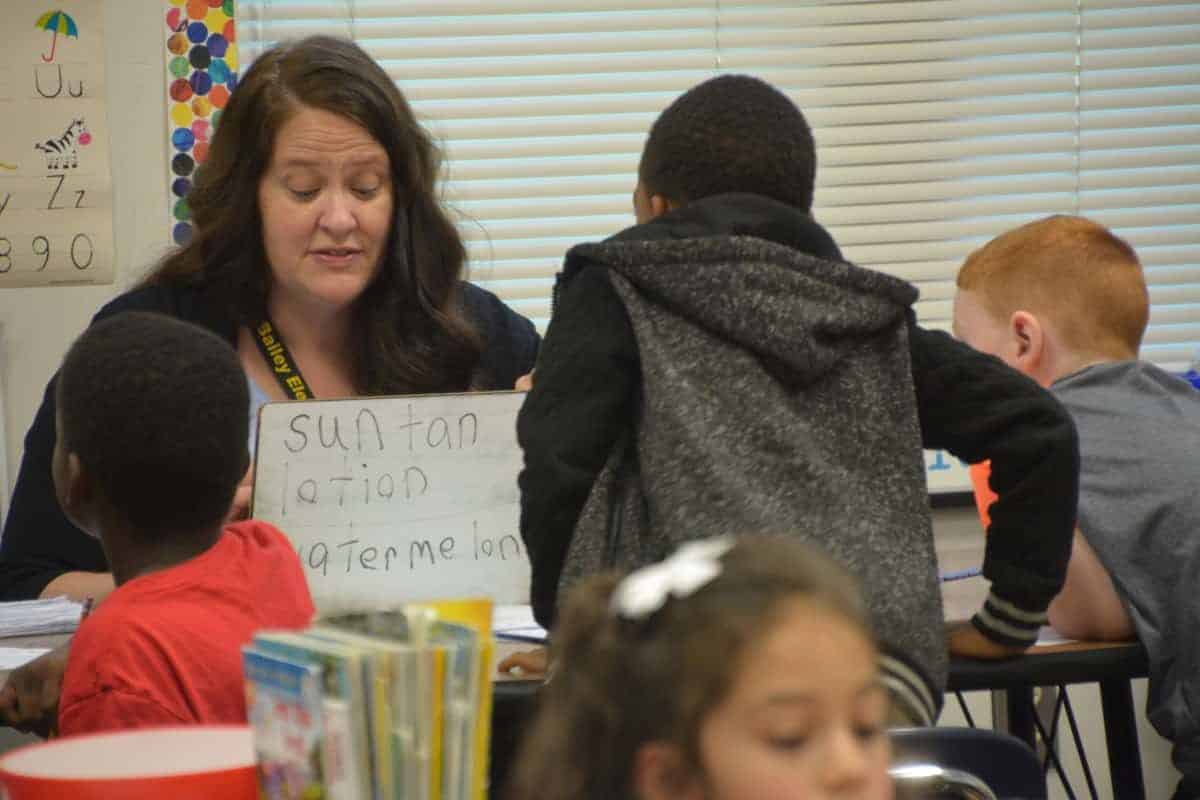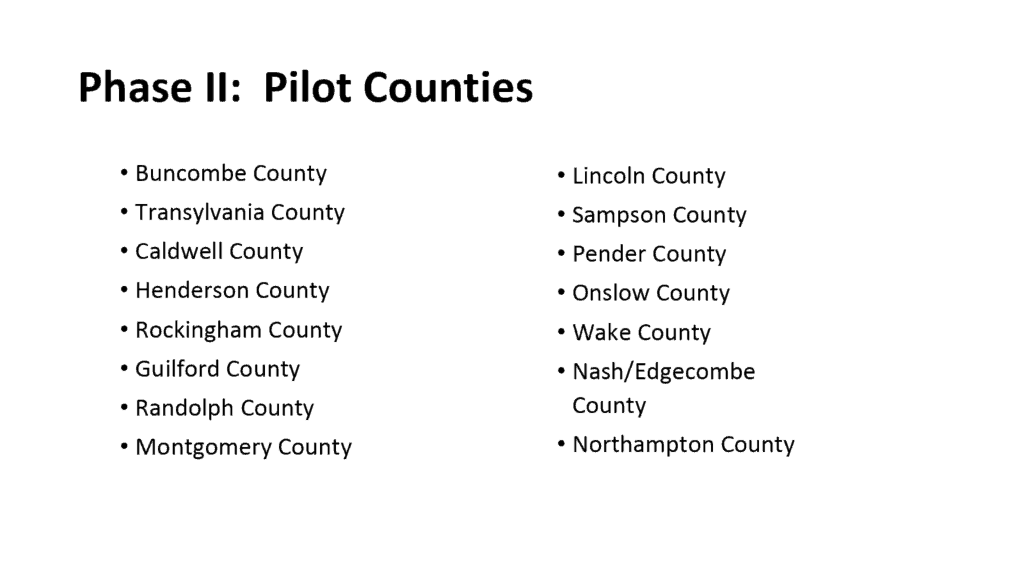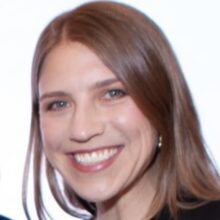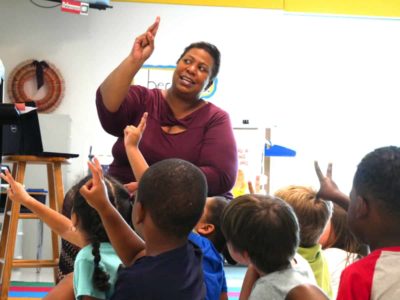
Over the last two years, state employees from both the Department of Health and Human Services (DHHS) and the Department of Public Instruction (DPI) have been trying to create a smoother transition for students and families from preschool to kindergarten. That experience, said Director of the NC Head Start Collaboration Office Karen McKnight, can feel fractured.
“Often, families will describe the transition… from going to pre-K to K as like a waterfall or jumping off a cliff,” McKnight said. “Because you get all this support and then all of a sudden you’re in kindergarten and there’s not as much support.”
The transition pilot aims to support families through that process by building communication and relationships between educators and parents — and between preschool and kindergarten teachers.
“There’s not been opportunities given in a lot of communities for the pre-K teachers and the kindergarten teachers to actually have time to talk or to even plan together,” said Kristi Snuggs, deputy director of the Division of Child Development and Early Education at DHHS.
Starting with three counties in 2018 and now piloting practices in 18 counties, the transition pilot program is part of a larger vision originally laid out in Senate Bill 740 in 2016 to create a coordinated system of education for young children instead of one that feels disjointed for students, families, and educators. Research shows that children’s earliest experiences heavily predict their achievement later in school and life.
“We believe that the successful coordination between pre-K and kindergarten really helps lay the groundwork for a child’s positive school experience,” Snuggs said.
The language that eventually made it into the 2016 budget requires the agencies to “promote the successful transition of children who receive assistance from NC Pre-K program and the Child Care Subsidy Assistance program for four- and five-star rated facility classrooms to kindergarten.”
The original mandate did not have funding to carry out the project. This year, the pilot has been partially funded through a Preschool Development Grant awarded to the state from the federal government. The federal Every Student Succeeds Act also requires localities to create transition plans between preschool and public school. State employees and the NC Early Childhood Foundation have been working to help local early childhood professionals develop those plans since 2016. Different preschool programs like NC Pre-K and Head Start also have requirements around helping children and families transition into kindergarten. Snuggs and McKnight said their agencies are working towards integrating the transition pilot and all of these other efforts and transition requirements.
Without a smooth transition, Snuggs said the stress of a new environment can be detrimental to student achievement.
“If it doesn’t [go well], what we have found is that children experience high levels of stress and that can interfere directly with their academic performance and their emotional adjustment,” she said. “What we find when that happens, if they don’t get a good start from the very beginning when they get into public school, that leads to things like chronic absenteeism, a lot of times we see failure to make academic gains, and so forth.”
Snuggs said information sharing is important to the state’s focus on third-grade reading proficiency, which is strongly tied to high school graduation.
“With so much emphasis being placed on children reading at grade level by grade three, it’s really important that this transition of understanding the child, understanding how the child interacts, understanding their social development and their academic performance and where they are, and that information being shared really sets that child up for future success,” she said.
Varying practices throughout the state
Before choosing three counties for the first year of the program, Snuggs said the team looked at what local communities were already doing to transition children to kindergarten.
“It really varied across the state,” Snuggs said. “It really depended on the county that you looked at.”
Most schools were doing some form of kindergarten orientation for parents and teachers to meet. In some counties, preschool children were visiting kindergarten classrooms before school started, or kindergarten teachers were visiting pre-K classrooms. Some teachers were even making home visits to give information to parents.
The three original counties in the program — Craven, Davidson, and Iredell — were chosen because of their existing focus on this transition. DHHS and DPI team members prioritized standardizing the information that was being shared. The idea was to help kindergarten teachers hit the ground running with individualized instruction and support from the beginning of the year.
The state asked the three counties to identify one NC Pre-K classroom in a private center and one in a public site to participate. The pre-K teachers were asked to fill out child information forms that included the five domains that the Kindergarten Entry Assessment is formed around: approaches to learning, language development and communication, cognitive development, emotional and social development, and health and physical development.
Snuggs said kindergarten teachers were especially interested in social and behavioral information about children coming into their classrooms.
“The kindergarten teachers said, we can assess a child when they get to us pretty quickly on their cognitive abilities, you know, related to reading and math… but they said the thing that we’re really needing more information on are social and emotional aspects of the child’s development,” she said.
In the second year, Snuggs said the form has been “beefed up” because of that feedback. Now, pre-K teachers share things like if a child has self-help skills such as being able to go to the bathroom alone or feed themselves, if a child has behavioral issues and what the teacher has tried to offset those issues, and if the child has an attention span to sit for a short story time.
“Those are the kinds of the things that the kindergarten teachers are saying are most valuable,” she said.
The child information form was half of the information the pilot aimed to share between preschool and kindergarten. Parents were asked to fill out a family engagement form that included questions on who’s living in the home and personal information like the child’s favorite colors and activities. Snuggs said the mission was “to learn a little more about the child in context of the family.”
“One of our focuses for the first year was really supporting families in understanding their child’s development and also really trying to figure out how to help them … be able to advocate for their children in kindergarten,” McKnight said.
Year one: An opportunity for parents to get involved?
Because of the first year’s family engagement focus, pre-K teachers were instructed to give the child information forms to the child’s parents, who were then supposed to give both the child information form and the family information form to their child’s kindergarten teacher. This was to encourage the parents to get involved in their child’s schooling experience and to help them connect with the kindergarten teacher. Snuggs said pre-K teachers emphasized the importance of giving this information to the teacher during parent/teacher conferences.
“We all knew that it was going to be difficult to get that information there,” Snuggs said. “But we wanted to give parents that opportunity.”
When the school year rolled around, none of the kindergarten teachers had received the information. The state team had back-up copies that they gave the kindergarten teachers by October. It was clear the strategy needed adjustment.
Snuggs said another reason for the parent idea was the lack of a statewide system to share this information. The B-3 Interagency Council includes representatives from both DHHS and DPI and is another example of the effort to increase coordination between early childhood and K-12 systems. One of its recommendations is the creation of a uniform system to share information between school districts and four-year-old classrooms.
Year two: Developing strategic plans
In the meantime, the second year of the pilot program has shifted to encouraging the 18 participating counties to come up with transition plans — including ways to share information — that work for them. Pre-K teachers have been instructed to share child development information with kindergarten teachers, parents, and the state team while local leadership teams create strategic transition plans.
“We sort of did it from the ground up since there wasn’t a state-level solution yet,” Snuggs said. Below is a list of the participating counties added in the program’s second year.

The composition of the local leadership teams vary from county to county, but many used existing NC Pre-K Advisory Committees that have representatives from early childhood programs and public school districts. Snuggs said the community transition plans have these guidelines:
- Kindergarten orientation happening at elementary school
- Parents should share the family engagement information with the kindergarten teacher
- Pre-K and kindergarten teachers should work together to create information that will be sent home to families so they know what to expect for kindergarten
- Pre-K and kindergarten teachers should have time to get together and plan and create information that will be helpful for parents and children as transition occurs
- Pre-K teachers share the child development information with kindergarten teachers, and there should be a process at the local level where sharing information can occur
The second-year counties each have three participating classrooms: an NC Pre-K private classroom, an NC Pre-K public classroom, and a classroom including NC Pre-K and Head Start children.
Carla Garrett, a Title I preschool consultant in DPI’s Office of Early Learning, said simply having administrators and teachers from both early childhood and public school in the same room has been a success of the program. Even when in the same building, Garrett said pre-K and kindergarten teachers often do not have the time set aside to focus on transitioning their students. Often, children in a single pre-K class are headed to several different elementary schools.
“Having that intentional time to focus on transition and to talk about the process and particular children, sometimes that’s difficult to achieve,” Garrett said. “This project has allowed that intentional time to have that focus.”
Snuggs said during the first year, one day was set aside for just pre-K and kindergarten teachers from participating counties to collaborate. She said some kindergarten teachers were surprised to find that early childhood educators used a curriculum. She said truly smoothing this transition will also take alignment of standards and instruction.
“Part of the transition is about aligning standards and curricula and instructional practices and when we can do all of that, children and families experience a more seamless pathway,” she said.
Scaling up
The team has an ambitious goal for this project: By 2025, all 100 counties will have active transition plans for all four-year-old classrooms and all 4-year-olds entering kindergarten.
Snuggs said the next step is to provide technical assistance and professional development to the 18 local leadership teams in creating their community transition plans and understanding how this effort fits into their local Every Student Succeeds Act work.
After incorporating Head Start classrooms this year, the team will next expand to private centers that receive child care subsidies. After that, the project’s focus will shift to children who are not in formal arrangements before kindergarten. Less than half of 4-year-olds across the state are in a licensed child care setting.
“We’re trying to get the process honed down and streamlined before we can try and support those children and families that are not in formal care,” McKnight said.
As coordination and relationships between different local entities are strengthened, McKnight emphasized keeping family and child support at the center of all early childhood initiatives. No matter a child’s experiences before public school, McKnight said it’s important to remember that the only requirement for school readiness depends on age.
“They’re all our children,” she said. “They all end up in kindergarten.”


